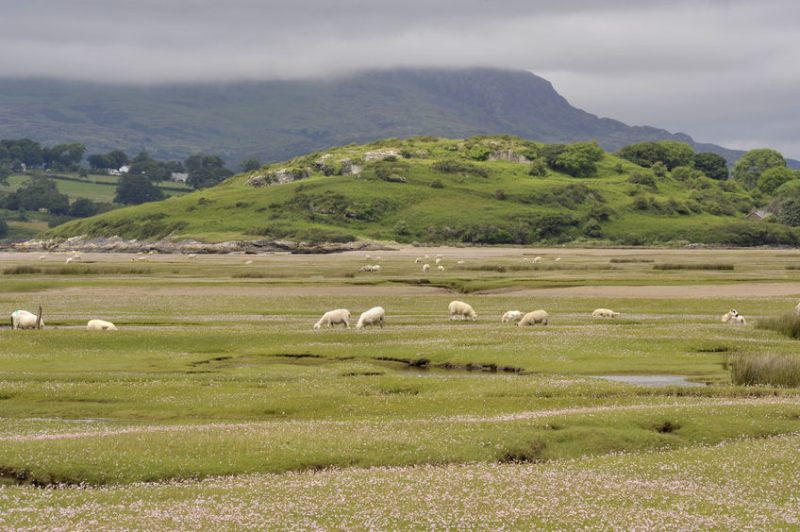
Protected urea can be a key tool for reducing emissions in grassland farming but a trial has raised possible shortcomings of its performance in prolonged dry spells.
Rhiwaedog, a farm near Bala, Wales wants to improve nitrogen efficiency and increase the quantity and quality of grass grown to reduce reliance on bought-in feed.
From May to July the farming business sold 600 Texel-cross lambs, most of which were creep fed at a cost of £8/lamb.
“We are overly reliant on finishing lambs from the bag, we want to suppress as many costs as possible and fatten off grass," Aled Jones told farmers watching a Farming Connect Demo Farm Live broadcast from Rhiwaedog.
“We want to spend less on concentrates and utilise grass to its greatest potential."
Creep feeding did however enable the business to achieve higher prices early in the season, and to shut off more ground for silage.
But Mr Jones added: “With the remaining 1,600 lambs we would like to be able to finish them all off grass, roots and reseeds and not use the bag."
The family has been working with independent grassland specialist Chris Duller on a project that seeks solutions for that.
One of the projects they have embarked on is to compare the performance of difference sources of nitrogen (N) – ammonium nitrate, which has an N content of 34.5% and urea and protected urea, which both have an N content of 46%.
The protected urea is designed to reduce the loss of ammonia gas as the urea converts into plant available ammonium and nitrate as, in unfavourable conditions, 70% of urea nitrogen can be lost to the atmosphere.
On 11 April 2020, urea and protected urea were applied on pasture ground at 85kg/hectare, supplying 40kgN/ha.
After four weeks, grass height in the protected urea applied pasture was 31cm compared to 23cm in the urea zone – a 30% increase in growth, demonstrating that it had retained N.
In addition to the environmental benefit, reducing the amount of nitrogen lost to the atmosphere in the form of ammonia and nitrous oxide has a clear financial benefit, as more nitrogen stays in the soil and is available for uptake.
But when protected urea was trialled against ammonium nitrate on silage ground at Rhiwaedog during this year’s dry spring, its performance fell short.
It was applied on 15 May, at 185kg/ha, with ammonium nitrate spread at a rate of 250kg/ha – so both supplying 86kgN/ha.
On 22 June, the field which had ammonium nitrate applied had produced 5,050kgDM/ha of grass but the protected urea only 4,120kgDM/ha – 20% less.
Mr Duller told farmers listening to the Demo Farm Live broadcast that this could have resulted from the protracted dry period breaking down the protective layer of the prill.
He said that multiple studies in Ireland had demonstrated that protected urea delivers equivalent yields to ammonium nitrate therefore more trials would be undertaken at Rhiwaedog.
The farm is also growing multi species leys using a mix high in legumes and herbs with only a 4% ryegrass content.
Mr Duller explained that in English stewardship schemes farmers can access £300/ha in subsidy for growing these diverse leys.
“The leys are not cheap to grow and not that simple to manage so we will be monitoring how they perform in the climate and management regimes at Rhiwaedog," he said.
